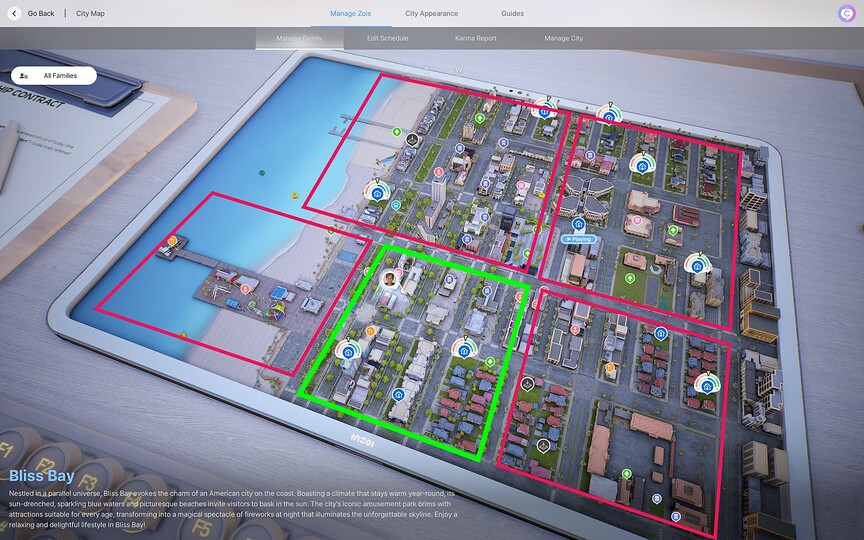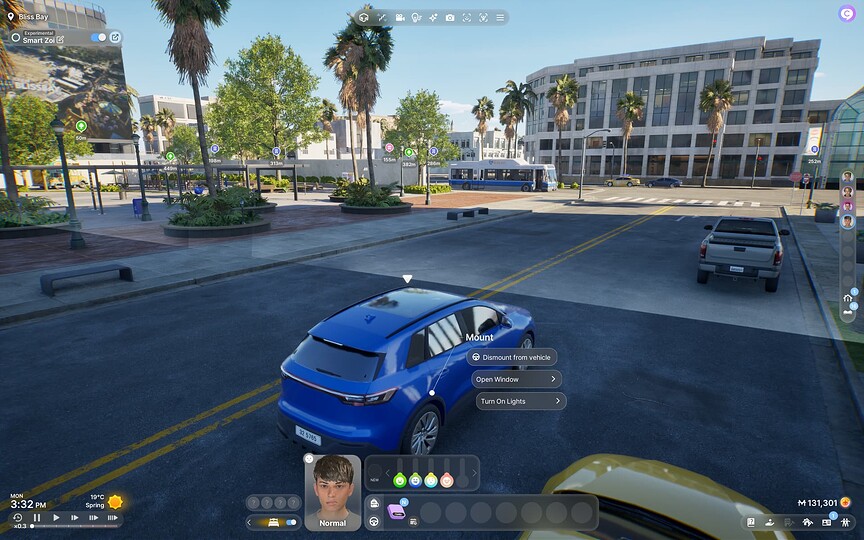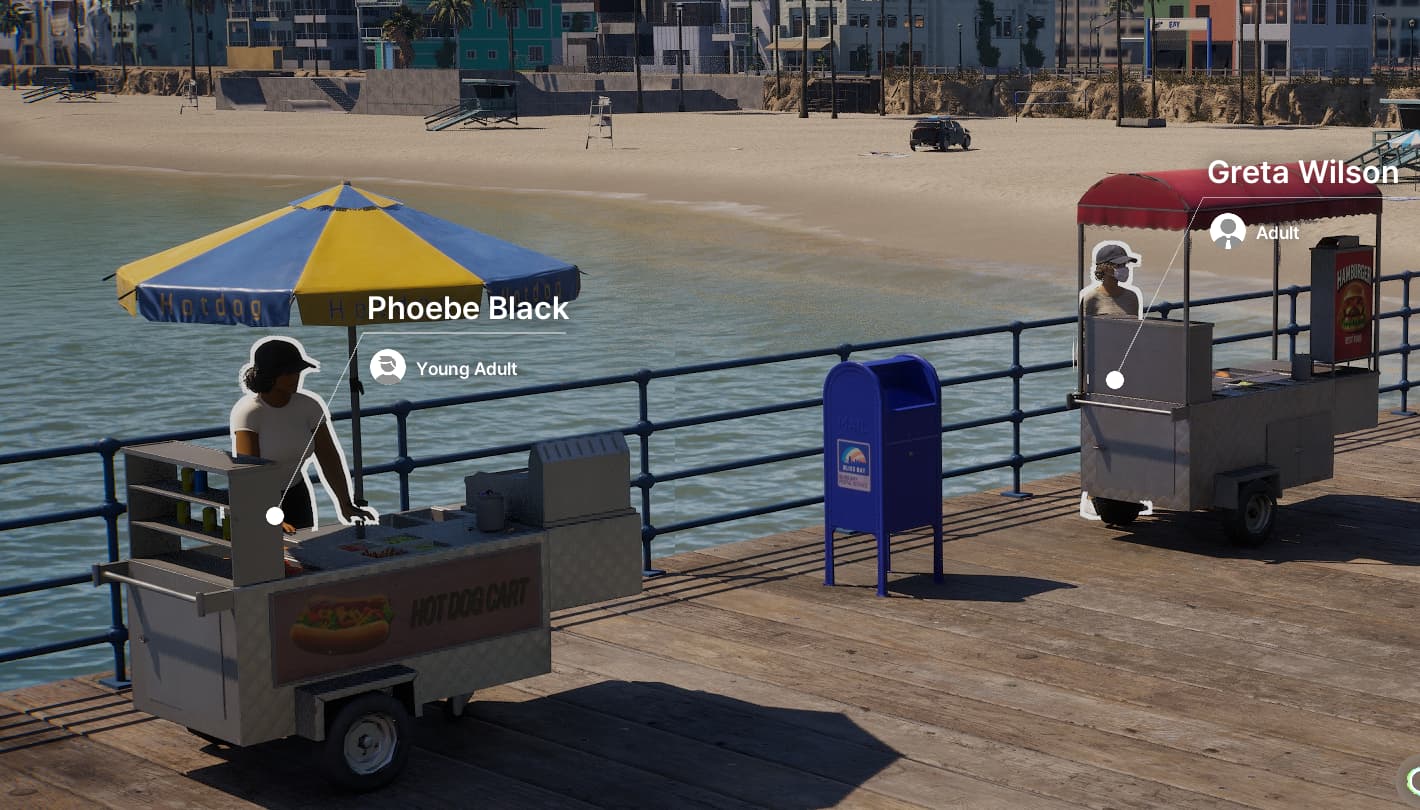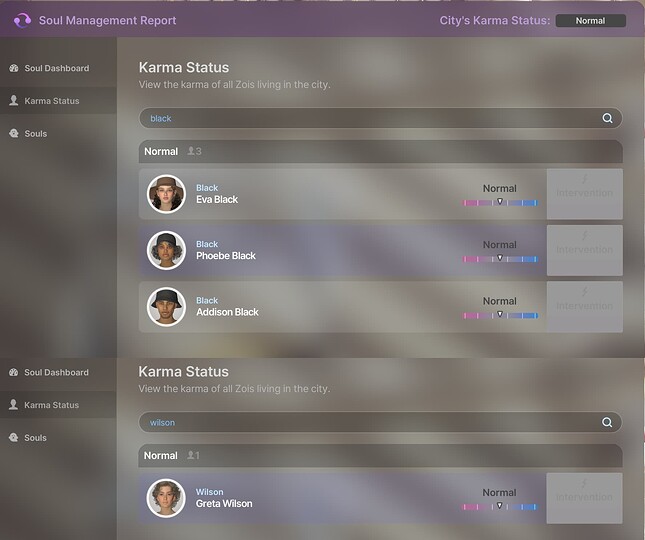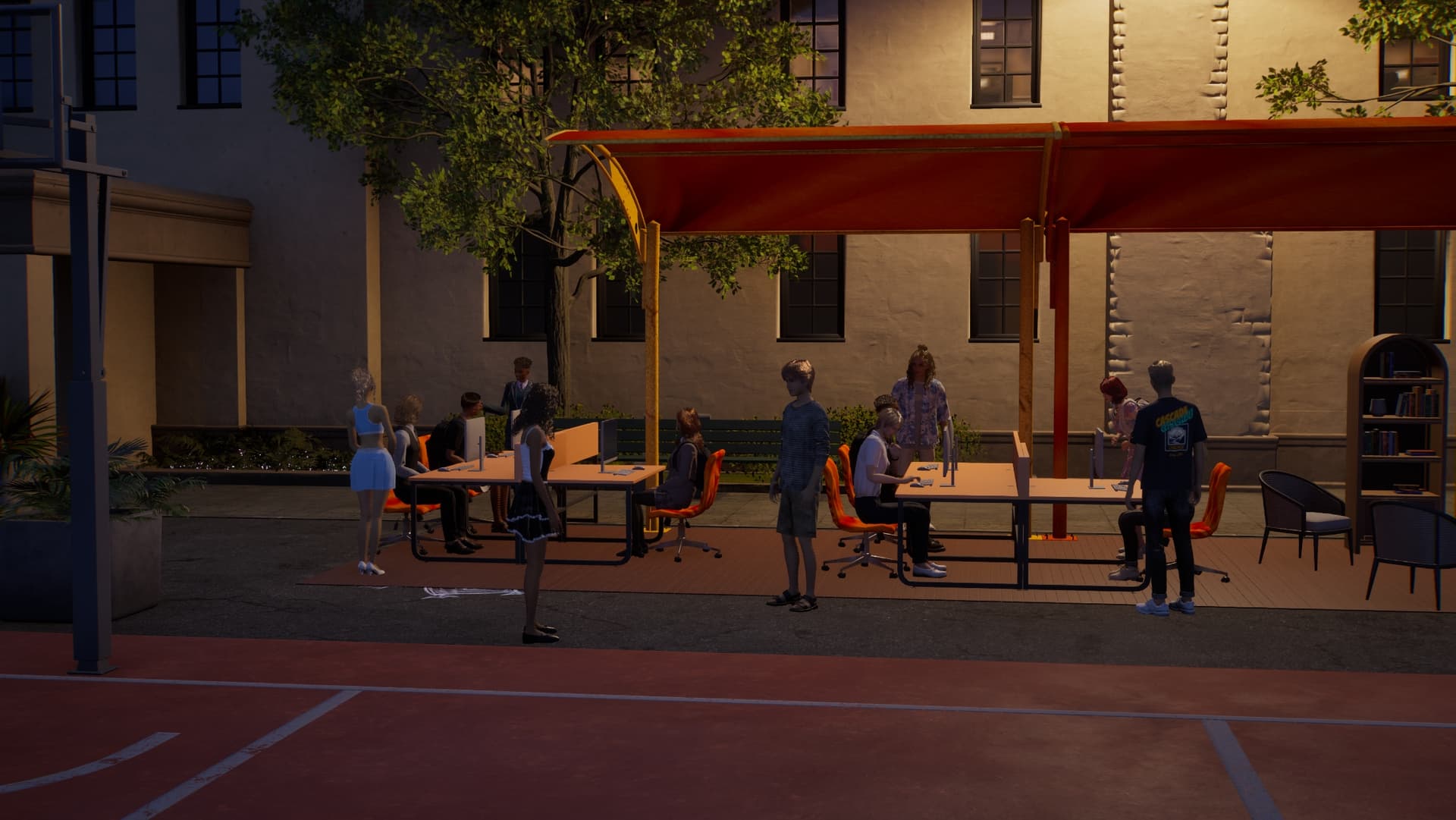Before anyone say they wanted full open world:
- This doesn’t remove anything from the map or removing open world feature. But only sectionize the city into multiple sections (active & inactive) to reduce simulations and data loads.
“Partial Open World” Advantages:
- More npcs, more venues can be added in smaller areas, livelier and more immersive in every part of the city, no more emptiness. More optimized and smoother performance, less concerns about future contents that may have significant impact on performance. More people can play the game on low specs, reduced minimum system requirements. Existing players can play on higher or maximum graphics quality without need to upgrade their system.
Sections
- Dowon = 3 Sections
- BlissBay = 5 Sections (More sections due to it’s size 2x larger than Dowon)
- Cahaya = 2 Sections
= ACTIVE
- Only 1 section can be active at a time.
= INACTIVE
- Inactive section are not functioning, no simulation, everything is passive.
- All venue datas inside inactive sections are not loaded, or maybe only exteriors.
Barrier Colliders
- Barrier collider at the edges for every sections. Once player walk through it, either:
- No loading screen. Gradually load the entered area & unload previous active area.
- A short loading screen. Instantly load the entered area.

